Hospitality is part of the Bedouin tradition and is expressed in drinking coffee, in Arabic called gahwa. I often refer to myself as a coffee-aholic, since coffee is my favorite drink, after vodka.
My experience drinking Arabic coffee was usually in the desert with Saudi friends. First the beans are roasted, then crushed. Spices, as cardamom clove, nutmeg, and bits of saffron are added. The coffee was poured back and forth between pots until the host decided the light blonde roast was ready to drink. Served in small cups, the gahwa was smooth and had an aroma depending upon what spices were used. To me it was the best coffee I have ever had.
UNESCO includes coffee as part of the cultural heritage of the Gulf countries, Saudi Arabia, UAE, Oman, and Qatar. The dalah, the traditional Arab flat bottom coffee pot, is often found on posters and imprinted on coins.
Coffee provided me with an interesting two-hour conversation with a Saudi director of the utility company. He was seated next to me first class on Saudi Air flying to Jeddah. Both of us were flying on business. We nodded but didn’t speak.
Once airborne, Saudi coffee, light and blonde, was served in the small round cups. I drank one, nodded to the attendant, and chugged another. By the time I got to my third cup, the attendant was setting down chilled dates on my service tray. I love dates as much as I love coffee.
As I ate and drank with gusto, I was conscious that the man sitting next to the window was watching me. He too was drinking coffee and took a plate of dates. As I started my third cup of coffee, he spoke to me asking about the dates and coffee. We talked for the next two hours about where we both worked and about life in the kingdom. To me there is no doubt that without the coffee and dates, we never would have had such a conversation. The flight to Jeddah was the fastest I ever had.
The Last Polar Bear – Part 2
By Katherine Burlake
… He jumped at the sound of cracking.
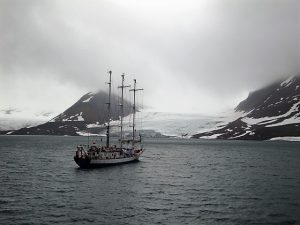 A part of the glacier across the fjord was falling as if in slow motion into the water. The boat rocked, churned up by the waves from the avalanche the locals call “white thunder.” The man looked down and saw a glint of white as a school of whales calmly swam up the fjord, apparently not disturbed by the avalanche. Their white bodies told him they were Belugas, rare but not unusual. When ice was in the fjord, the whales often were trapped in what the Inuit natives of the Arctic call a savsatt, a small opening in an expanse of ice. There the whales are easy prey for polar bears. He had never seen such a feast, only heard of them. A part of the glacier across the fjord was falling as if in slow motion into the water. The boat rocked, churned up by the waves from the avalanche the locals call “white thunder.” The man looked down and saw a glint of white as a school of whales calmly swam up the fjord, apparently not disturbed by the avalanche. Their white bodies told him they were Belugas, rare but not unusual. When ice was in the fjord, the whales often were trapped in what the Inuit natives of the Arctic call a savsatt, a small opening in an expanse of ice. There the whales are easy prey for polar bears. He had never seen such a feast, only heard of them.
Using binoculars, he scanned the shore and the high tundra. Bears were known to take naps anywhere at any time. Napping during the day is common because their primary food, seals, hunt at night. Scientists believe naps help the bear conserve energy which is why polar bears prefer to still-hunt by sitting at the seal’s ice holes. With their size and bulky body, bears use twice the energy of other mammals to walk or run.
Looking up the ridge, he envisioned a polar bear on the grassy hillock searching for berries or sleeping on a patch of ice. On land, polar bears raid the seabird colony nesting areas of the Black Maillot and Kitty-waits for eggs. Often the bears eat bird eggs all summer. In this colony, the birds built nests on a rocky wall above the water giving them good protection from predators. The Hornsund fjord bird cliffs, home to thousands of nesting auks, rose above the boat. But at the moment the sky was empty.
Reluctantly, he realized there were no polar bears in this fjord today. It was time to head to Hinlopen Strait on the northeastern end of the nine island archipelago. If polar bears are on Svalbard Island, they should be in Hinlopen Strait.
The boat entered the strait passing by decaying foundations of whaling stations and trappers’ huts. Some weathered wooden buildings scattered along the shoreline were remnants of the nineteenth and early twentieth century expeditions to the North Pole. Above the buildings, fog shrouded the grey mountains. Today, only the glaciers and ice fields were white since the snow on the peaks had left for the summer.
The strait, like the adjacent fjords, is deeper than the Arctic sea surrounding the archipelago. The strong current running south through the aqua-marine water was flat. He thought of the Rime of the Ancient Mariner, by Samuel Taylor Coleridge. The words he remembered always haunted him when entering a pristine body of water. “The fair breeze blew, the white foam flew, the furrow free, we were the first that ever burst into that silent sea.” The boat was not the first to arrive in this strait. On the beach, a half dozen walruses rested on a sandbar. Sleeping in the summer sun, they looked well fed and easily able to spot predators. If walruses thrive, so should seals.
Radar showed ice floes ahead with one solid sheet of ice touching the shore. The water in the strait itself was full of ice floes or mini icebergs. Their tops are white and the bases reflect the fluorescent blue-green water. The ice is jagged, broken by ridges caused by the melting and moving of Arctic currents that quietly run beneath the strait. The ridges are often quite high and could hide a polar bear.
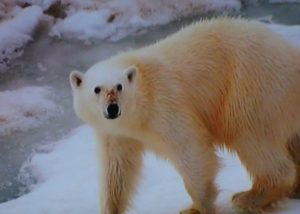 The boat passed a large ringed seal resting on a small ice floe. The seal, basking in the sun, casually raised its head to watch the boat pass by. The boat was not a predator. Seals on the ice mean polar bears will arrive soon as the bear can smell the seals from miles away. His eyes carefully searched the ice ridges. Suddenly, the boat engines whined to a stop in the thick ice. He backed the boat around to turn toward open water. As the boat turned, he noticed a polar bear behind a ridge hunched over an ice hole. The boat passed a large ringed seal resting on a small ice floe. The seal, basking in the sun, casually raised its head to watch the boat pass by. The boat was not a predator. Seals on the ice mean polar bears will arrive soon as the bear can smell the seals from miles away. His eyes carefully searched the ice ridges. Suddenly, the boat engines whined to a stop in the thick ice. He backed the boat around to turn toward open water. As the boat turned, he noticed a polar bear behind a ridge hunched over an ice hole.
The polar bear heard the boat and turned its head to look at them. There was a pause as the bear turned back to the ice hole. Then the polar bear rose and began its lumbering walk across the ice in the direction of the towering glacier-covered mountains. He watched the polar bear’s slow-motion walk. What did the bear see as he headed for the horizon of ice? He would never know. Nor would he ever know if he was looking at the last polar bear on Svalbard Island.
============================
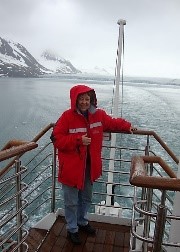 The pictures featured in this story were taken by the author as she experienced the fjord by boat. The pictures featured in this story were taken by the author as she experienced the fjord by boat.
Post your comments below and share your stories of adventure and survival.
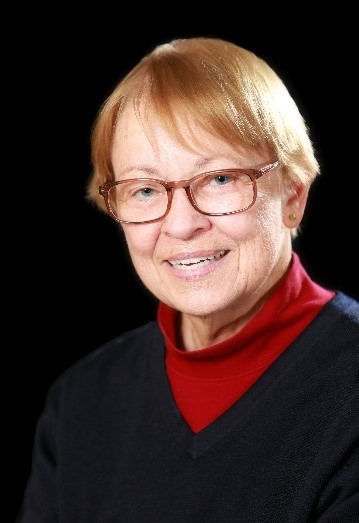 Katherine Burlake always wanted to be a writer but had no idea most of her published work would be in different publications, magazines and periodicals. Below is a short story written after visiting Svalbard Island that captures what she learned about the area through the eyes of a local biologist as he navigates the icy waters. Katherine Burlake always wanted to be a writer but had no idea most of her published work would be in different publications, magazines and periodicals. Below is a short story written after visiting Svalbard Island that captures what she learned about the area through the eyes of a local biologist as he navigates the icy waters.
The Last Polar Bear
By Katherine Burlake
Svalbard Island, covered with snow-capped peaks and glaciers, is one of the last wilderness areas in the world. An isolated arctic island archipelago the size of West Virginia and governed by Norway, it is often featured on electronic route maps of commercial jets flying between North America and Europe. Snow and sea ice once stretched five hundred miles from the North Pole to the island. Today, the ice melts by late summer trapping polar bears that arrive on ice floes hunting seals. The life of a polar bear is a search for food to survive until the ice returns.
 The sound of the engine was nearly mute in the glacial mountains surrounding Hornsund Fjord. Looking up, he understood why the Dutch, one of the first explorers of the island, called it the land of pointed mountains. The man pushed aside memories of other trips up the sound and thought about the question the team sought to answer on this one: do polar bears survive trapped on the island? He locked the wheel and scanned the graveled beach ahead. His team’s search of the fjords and mountains by plane found no evidence of polar bears. A bear could be napping in a mountain crevasse and never be seen by his crew. The boat was slower but offered more opportunities for sightings. He was looking for frozen ice, or ice floes, essential for the survival of polar bears to hunt seals. Where was the ice? Had global warming caused the climate to change? The sound of the engine was nearly mute in the glacial mountains surrounding Hornsund Fjord. Looking up, he understood why the Dutch, one of the first explorers of the island, called it the land of pointed mountains. The man pushed aside memories of other trips up the sound and thought about the question the team sought to answer on this one: do polar bears survive trapped on the island? He locked the wheel and scanned the graveled beach ahead. His team’s search of the fjords and mountains by plane found no evidence of polar bears. A bear could be napping in a mountain crevasse and never be seen by his crew. The boat was slower but offered more opportunities for sightings. He was looking for frozen ice, or ice floes, essential for the survival of polar bears to hunt seals. Where was the ice? Had global warming caused the climate to change?
To survive, polar bears must eat seals. Catching seals is a tricky business and sets the polar bear apart as one of the most intelligent mammals. They sit hunched over like old fishermen on ice holes for hours or even days, waiting for a seal to appear. Their eating cycle is feasting and fasting. Was that a polar bear on the ridge above the beach? He couldn’t be sure. They move rapidly and blend into the ice. What amazed him was the distance they could cover. He kept his eyes on the far end of the ridge to see if anything moved. Nothing!
In past years, the crystal blue-green waters of the fjord were filled with pack ice. The Arctic ice floes improve the survival rate of ringed seals that breed in the fjord. The ice protects the seal pups from predators and keeps the pups and mother together. The ice floes need to be large for seals to cut breathing holes in the ice. Using the sharp claws on their flippers, they cut between ten and fifteen breathing holes and, amazingly, keep them open all year. Only ringed seals use ice holes which could be why they are the bear’s favorite food. Polar bears will eat other seals, but ice floes make catching a seal easier.
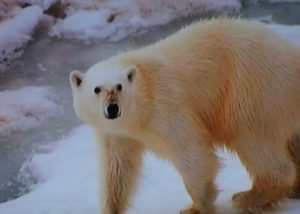 Polar perch and crustaceans fill the fjord’s water and are a feast not only for ringed seals, but also harbour seals and bearded seals. Polar bears only eat the liver of the seal, and Arctic foxes follow them to eat what remains. No one is sure why they only eat the liver. The man smiled, it wasn’t as if you could ask the bear. Polar perch and crustaceans fill the fjord’s water and are a feast not only for ringed seals, but also harbour seals and bearded seals. Polar bears only eat the liver of the seal, and Arctic foxes follow them to eat what remains. No one is sure why they only eat the liver. The man smiled, it wasn’t as if you could ask the bear.
Local officials repeatedly told the team there were several thousand polar bears on the island. He thought the number was exaggerated to allow commercial interests like mining to continue unabated. On trips ashore, his team often found polar bear cubs and Arctic foxes, both endangered species having died of starvation. To him, this was proof the polar bear might not survive.
Years ago he spent a summer surveying polar bears in this fjord. From a distance, he watched single males and females with cubs roaming the ridges eating berries, raiding bird nests for eggs, and hunting seals. If they caught his scent, they immediately marched off across the tundra. Even with cubs, a mother walks rapidly, her low, plodding gait covering over two kilometers an hour, about half the speed of a male bear. Whalers in the twentieth century called the polar bear “the farmer” because of his pigeon-toed gait.
A century ago, coal mining was a major industry, but today the mines are in ruins. With the ice gone, mining could again be profitable. He wondered if the polar bear was curious about the boats going up to the mines. Did the polar bear get angry if boats broke up their hunt for seals? The bears usually stayed away from man. That, he thought, is another indication of their intelligence. Several times he watched bears slowly creep out onto a thin piece of ice. One time a clever bear stretched out his body to distribute it across the ice. This is a necessary and skilled move on thin ice for males weighing from 750 to 1500 pounds. Females tend to be much smaller at 350 to 500 pounds.
He jumped at the sound of cracking … continue reading
======================================
The pictures featured in this story were taken by the author as she experienced the fjord by boat.
A Last Request
Chapter 1: The Key
By Katherine Burlake
April 1990: Over the Atlantic Ocean
 From the window of the jet, Amy Prowers watched as the sky in the east darkened. She wondered if the setting sun looked the same for her father when he died. No, not just dead, but killed, she thought. Despite the findings of the Director General for Civil Aviation of Mexico who called it pilot error, she and her aunt Sonora were sure his plane crash was no accident. From the window of the jet, Amy Prowers watched as the sky in the east darkened. She wondered if the setting sun looked the same for her father when he died. No, not just dead, but killed, she thought. Despite the findings of the Director General for Civil Aviation of Mexico who called it pilot error, she and her aunt Sonora were sure his plane crash was no accident.
On the seat beside her sat the icon book and the letter his lawyer gave her at the reading of his will. In this letter, her father said the Shroud of Turin was hidden in the church at the Gracanica monastery. He asked her to find it and take it to the cathedral in Turin, Italy, replacing the fake one. He ended his letter with a warning: be careful who you trust.
Amy felt the trip could be a wild goose chase. But if her father had indeed hidden the burial cloth of Christ in this monastery, she had to honor his last request.
The note made no sense, and I don’t know anyone at the monastery who could help me.
Leaning back against the seat, Amy sipped her vodka. If the real Shroud wasn’t in Turin, there could be a scandal – for Italy, Serbia, and the Catholic Church. There had to be more to his request.
For years, her father traveled every few months to the monastery. She thought he was visiting old buddies from World War II. Now she wasn’t sure. Why didn’t he just say where he hid the Shroud? Her father always had secrets, but hiding the Shroud of Turin … for what reason?
Amy hoped someone at the monastery would know. One thing she did know: the past had not died with her father, and he was reaching out to her from his grave. Her Aunt Sonora had said, “Someone wanted Benton dead. Amy, you have to follow through on his legacy or the past is lost forever.”
If the Shroud is at the monastery, I’ll find it and discover those responsible for his death. Amy smiled, remembering how her father loved puzzles. This one may have cost him his life.
If she was right, the letter was the first piece of the puzzle, the icon book the second, and going to the monastery the third.
The plane bounced in turbulence. Amy motioned to the stewardess for another vodka. Stretching her long legs she looked out the window as the moon disappeared in a cloud bank. The sky became as dark as the ground below.
Amy realized she faced a door in her life that needed to be unlocked. Hesitating, she opened the book, Icons of the Balkan Monasteries.
To her surprise, a small key, almost concealed, was taped inside the cover. An odd shape and size, it looked as if it would open a small box. Tearing it off and holding it in her hand, she wondered what it unfastened. One thing she knew – the key was the fourth piece of her father’s puzzle.
Being honest with herself, Amy resented being swept into her father’s past. Whatever the key opened, she knew it would change her life.
A thought from years ago flashed across her memory. Her first husband had called her a reluctant warrior. At the time, she thought he was nuts, but today he might be right. She had a feeling she was in for a fight. The thought occurred to her that her father wasn’t sure who would find his clues. Otherwise, his letter would simply tell her where the Shroud was hidden. She turned the pages in the book, looking at pictures of icons. On the last page was a Biblical quotation from the Book of Revelations.
Then I saw another angel coming down from heaven, surrounded by a cloud, and a rainbow over his head: his face shone and he held open in his hand a small scroll.
Amy skipped down to the last paragraph of the quote, likely underlined by her father.
God’s veiled plan, mysterious through the ages, would be fulfilled.
She fingered the key, watching the stars in the darkened sky. Sleep came slowly. When it did, angels blowing trumpets filled her dreams.
==========================
If you have not already read book one of the Amy Prowers series, The Bystander, a preview of the Prologue, Chapter 1: The Key, and Chapter 2: The Gracanica Monastery is contained in the back of the book. It can be purchased on Amazon.
A Last Request – Prologue
By Katherine Burlake
1945: Gracanica, a Serbian village
 The train was late. The train was late.
Benton Prowers hoped that wasn’t an omen. He and his partner, Brother Veilkov, needed every minute to locate the Shroud of Turin and get it off the train without being detected. It must stop, he told himself, because it needs water and coal to travel through the rugged Serbian mountains to the Albanian port.
The two men turned their heads, hearing a crunch on the snow. Someone walked toward them on the path. The two men relaxed, seeing the monk’s cousin, the yardman who serviced the trains. All three heard a rumble and felt a vibration through the frozen ground. The train slowly emerged from the darkness, billowing steam, and carrying a fortune in art and jewelry.
The Nazi guards watched from the stone bridge above the tracks as Veilkov’s cousin slowly walked onto the tracks to begin refueling, trying to delay the departure without the guards getting impatient. As the engine hissed steam, Benton and Brother Veilkov slipped out from behind the stack of coal and headed for the last rail car to find a small box with the letter M on it. For that information, they owed thanks to the local partisan, who loaded the train’s cargo of artwork. Otherwise, they’d never find it in the short time the train was stopped.
There were no guards on the train, which did not surprise Benton. Its appearance – looking like the local mail run – served as the train’s security.
Opening the door to the rail car, they found themselves looking at rows of crates stacked neatly on top of each other. It’s impossible, thought Benton, as he and Brother Veilkov hurried through the car, looking for the letter M imprinted on a crate. To their surprise, it was in front of them. Veilkov’s knife levered off the top. Inside was a small plastic packet.
Then they heard the hiss of steam and felt the train jerk forward. Veilkov stuffed the packet in his knapsack, and the two men headed for the back of the car. As the train cleared the water tank, they jumped off.
The guards on the bridge above the tracks saw them and shouted, “Halt!”
Using the local dialect, Veilkov shouted back, “We pick up the mail.”
The halt order was repeated. Lying on the gravel next to the tracks, they weren’t sure the guards could see them in the semi-darkness. Benton weighed their options to take out the guards.
The train was under the bridge when they heard a pop, the noise barely audible above the engine. The two men, experts in building bombs, knew the sound and dived behind a coal stack. A moment later, the train was under the bridge and exploded in the air. Pieces of debris flew in every direction. The guards on the bridge had no place to hide.
When the clatter of debris stopped, Benton and Veilkov hurried up the trail in the snow, the only two men in the world who knew the first icon, known as the Shroud of Turin, had not been destroyed.
1946: Gracanica Monastery
In the monastery’s private alcove, monks prayed day and night to the icon Christ in Glory. Veilkov prayed beside them, the Shroud of Turin concealed under his robe, remembering the train crash as if it was yesterday. He could still smell the fire and through the dust, see fragments of paintings and jewelry. Patiently, he waited, knowing his timing must be perfect.
One evening he was finally alone. Climbing up the four steps to the icons on the wall, he quickly hooked the packet containing the Shroud on the wire behind the icon Christ in Glory.
Kneeling to pray, in the icon he could see – with an insight few can claim – his own death.
==========================
If you have not already read book one of the Amy Prowers series, The Bystander, a preview of the Prologue, Chapter 1: The Key, and Chapter 2: The Gracanica Monastery is contained in the back of the book. It can be purchased on Amazon.
Author, Katherine Burlake
 At age 8, Katherine Burlake couldn’t find a single decent book to read in the children’s section of the Webster City, IA, library. She asked the librarian for help and was eventually shown Pearl Buck’s, The Good Earth. Many children her age would never have enjoyed this picture-less book written in 1931 about Chinese life and culture, but Katherine was instantly inspired to be an author. Her insatiable appetite for knowledge propelled her to gain a degree in political science, then enter the Air Force/Naval Intelligence School in Lowry, CO, and eventually land a writing position as a briefings officer. Little did she know that a career in the State Department would have her traveling with foreign service officers and diplomats all over the world, especially in the Middle East. There is no one more qualified to create a fictional account of the life of Amy Prowers in Katherine’s book, The Bystander, about a woman who finds herself in the middle of political intrigue in Saudi Arabia. Katherine learned about the culture and customs by living there from 1996 to 1999. At age 8, Katherine Burlake couldn’t find a single decent book to read in the children’s section of the Webster City, IA, library. She asked the librarian for help and was eventually shown Pearl Buck’s, The Good Earth. Many children her age would never have enjoyed this picture-less book written in 1931 about Chinese life and culture, but Katherine was instantly inspired to be an author. Her insatiable appetite for knowledge propelled her to gain a degree in political science, then enter the Air Force/Naval Intelligence School in Lowry, CO, and eventually land a writing position as a briefings officer. Little did she know that a career in the State Department would have her traveling with foreign service officers and diplomats all over the world, especially in the Middle East. There is no one more qualified to create a fictional account of the life of Amy Prowers in Katherine’s book, The Bystander, about a woman who finds herself in the middle of political intrigue in Saudi Arabia. Katherine learned about the culture and customs by living there from 1996 to 1999.
The Book Series
The Bystander is an authentic and compelling story taking you through an archeological exploration turned nightmare. The book can be purchased on Amazon.com in a Kindle, paperback, or hardback edition. Katherine has now created an equally enticing sequel called, A Last Request. This mystery thriller continues as character Amy Prowers investigates a monastery that may contain the real Shroud of Turin. The public believes the shroud is on full display at the Cathedral of Saint John the Baptist in Italy. Amy’s journey finds her caught between politics and religion on a radical scale to discover the real location. Once again, she will need to enlist the help of some high-profile friends as well as her aunt’s private international organization, The Committee. Will she find the actual shroud?
The Shroud of Turin is just one of the estimated 100,000 stolen or hidden treasures, artifacts, and stories of heroism from World War II that are still resurfacing today. A Last Request is a fictional account of what might have happened to this unique piece of history.
==========================
If you have not already read book one of the Amy Prowers series, The Bystander, a preview of the Prologue, Chapter 1: The Key, and Chapter 2: The Gracanica Monastery is contained in the back of the book. It can be purchased on Amazon.
 If your interested in the Middle East, especially Saudi Arabia, send me your comments and questions. If your interested in the Middle East, especially Saudi Arabia, send me your comments and questions.
Since we are making introductions, I would like to introduce my personal assistant, Isabella Rose.
She is a real critic!
Looking forward to reading your comments and having lively conversations on my blog.
Katherine B.
|
|
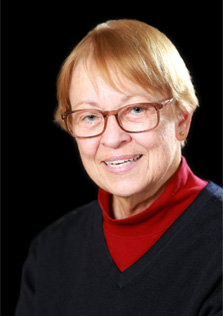
 A part of the glacier across the fjord was falling as if in slow motion into the water. The boat rocked, churned up by the waves from the avalanche the locals call “white thunder.” The man looked down and saw a glint of white as a school of whales calmly swam up the fjord, apparently not disturbed by the avalanche. Their white bodies told him they were Belugas, rare but not unusual. When ice was in the fjord, the whales often were trapped in what the Inuit natives of the Arctic call a savsatt, a small opening in an expanse of ice. There the whales are easy prey for polar bears. He had never seen such a feast, only heard of them.
A part of the glacier across the fjord was falling as if in slow motion into the water. The boat rocked, churned up by the waves from the avalanche the locals call “white thunder.” The man looked down and saw a glint of white as a school of whales calmly swam up the fjord, apparently not disturbed by the avalanche. Their white bodies told him they were Belugas, rare but not unusual. When ice was in the fjord, the whales often were trapped in what the Inuit natives of the Arctic call a savsatt, a small opening in an expanse of ice. There the whales are easy prey for polar bears. He had never seen such a feast, only heard of them. The boat passed a large ringed seal resting on a small ice floe. The seal, basking in the sun, casually raised its head to watch the boat pass by. The boat was not a predator. Seals on the ice mean polar bears will arrive soon as the bear can smell the seals from miles away. His eyes carefully searched the ice ridges. Suddenly, the boat engines whined to a stop in the thick ice. He backed the boat around to turn toward open water. As the boat turned, he noticed a polar bear behind a ridge hunched over an ice hole.
The boat passed a large ringed seal resting on a small ice floe. The seal, basking in the sun, casually raised its head to watch the boat pass by. The boat was not a predator. Seals on the ice mean polar bears will arrive soon as the bear can smell the seals from miles away. His eyes carefully searched the ice ridges. Suddenly, the boat engines whined to a stop in the thick ice. He backed the boat around to turn toward open water. As the boat turned, he noticed a polar bear behind a ridge hunched over an ice hole. The pictures featured in this story were taken by the author as she experienced the fjord by boat.
The pictures featured in this story were taken by the author as she experienced the fjord by boat. Katherine Burlake always wanted to be a writer but had no idea most of her published work would be in different publications, magazines and periodicals. Below is a short story written after visiting Svalbard Island that captures what she learned about the area through the eyes of a local biologist as he navigates the icy waters.
Katherine Burlake always wanted to be a writer but had no idea most of her published work would be in different publications, magazines and periodicals. Below is a short story written after visiting Svalbard Island that captures what she learned about the area through the eyes of a local biologist as he navigates the icy waters. The sound of the engine was nearly mute in the glacial mountains surrounding Hornsund Fjord. Looking up, he understood why the Dutch, one of the first explorers of the island, called it the land of pointed mountains. The man pushed aside memories of other trips up the sound and thought about the question the team sought to answer on this one: do polar bears survive trapped on the island? He locked the wheel and scanned the graveled beach ahead. His team’s search of the fjords and mountains by plane found no evidence of polar bears. A bear could be napping in a mountain crevasse and never be seen by his crew. The boat was slower but offered more opportunities for sightings. He was looking for frozen ice, or ice floes, essential for the survival of polar bears to hunt seals. Where was the ice? Had global warming caused the climate to change?
The sound of the engine was nearly mute in the glacial mountains surrounding Hornsund Fjord. Looking up, he understood why the Dutch, one of the first explorers of the island, called it the land of pointed mountains. The man pushed aside memories of other trips up the sound and thought about the question the team sought to answer on this one: do polar bears survive trapped on the island? He locked the wheel and scanned the graveled beach ahead. His team’s search of the fjords and mountains by plane found no evidence of polar bears. A bear could be napping in a mountain crevasse and never be seen by his crew. The boat was slower but offered more opportunities for sightings. He was looking for frozen ice, or ice floes, essential for the survival of polar bears to hunt seals. Where was the ice? Had global warming caused the climate to change? Polar perch and crustaceans fill the fjord’s water and are a feast not only for ringed seals, but also harbour seals and bearded seals. Polar bears only eat the liver of the seal, and Arctic foxes follow them to eat what remains. No one is sure why they only eat the liver. The man smiled, it wasn’t as if you could ask the bear.
Polar perch and crustaceans fill the fjord’s water and are a feast not only for ringed seals, but also harbour seals and bearded seals. Polar bears only eat the liver of the seal, and Arctic foxes follow them to eat what remains. No one is sure why they only eat the liver. The man smiled, it wasn’t as if you could ask the bear. From the window of the jet, Amy Prowers watched as the sky in the east darkened. She wondered if the setting sun looked the same for her father when he died. No, not just dead, but killed, she thought. Despite the findings of the Director General for Civil Aviation of Mexico who called it pilot error, she and her aunt Sonora were sure his plane crash was no accident.
From the window of the jet, Amy Prowers watched as the sky in the east darkened. She wondered if the setting sun looked the same for her father when he died. No, not just dead, but killed, she thought. Despite the findings of the Director General for Civil Aviation of Mexico who called it pilot error, she and her aunt Sonora were sure his plane crash was no accident. The train was late.
The train was late. If your interested in the Middle East, especially Saudi Arabia, send me your comments and questions.
If your interested in the Middle East, especially Saudi Arabia, send me your comments and questions.